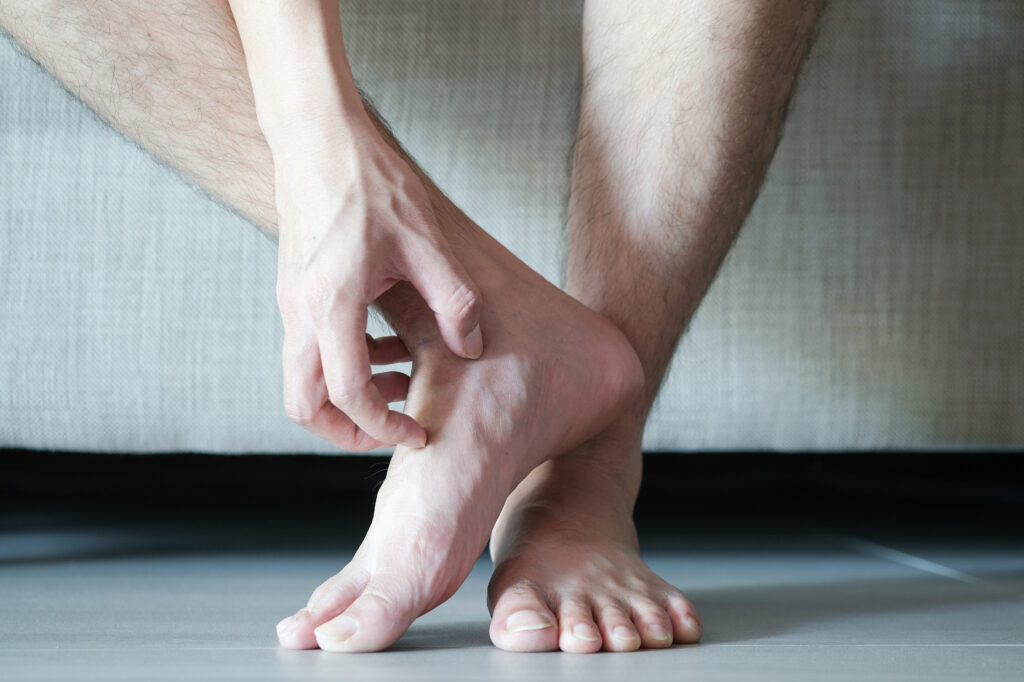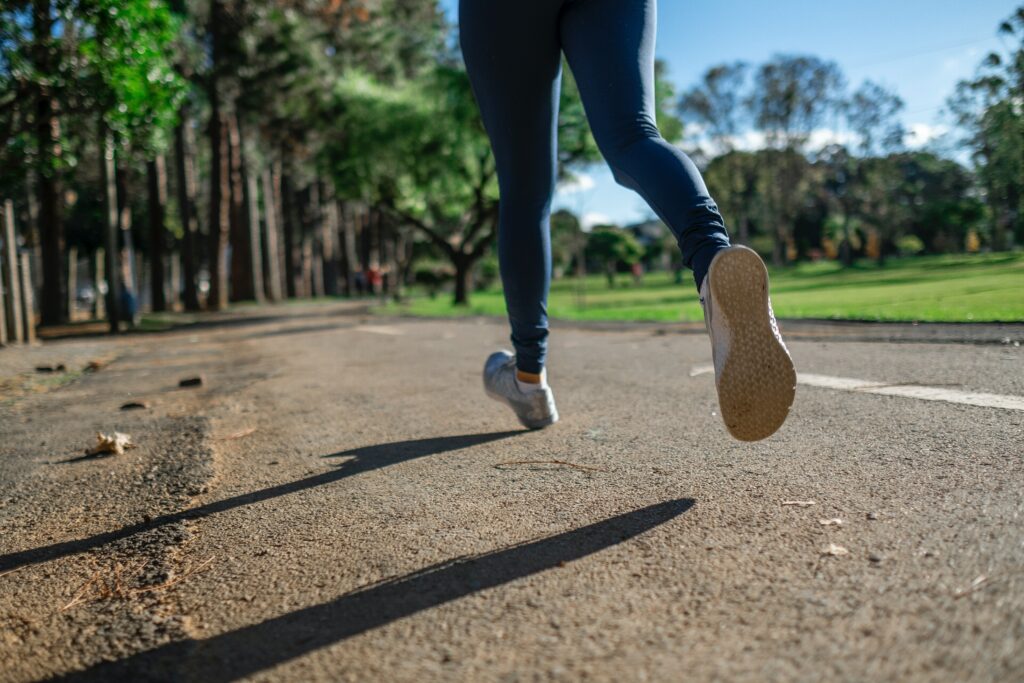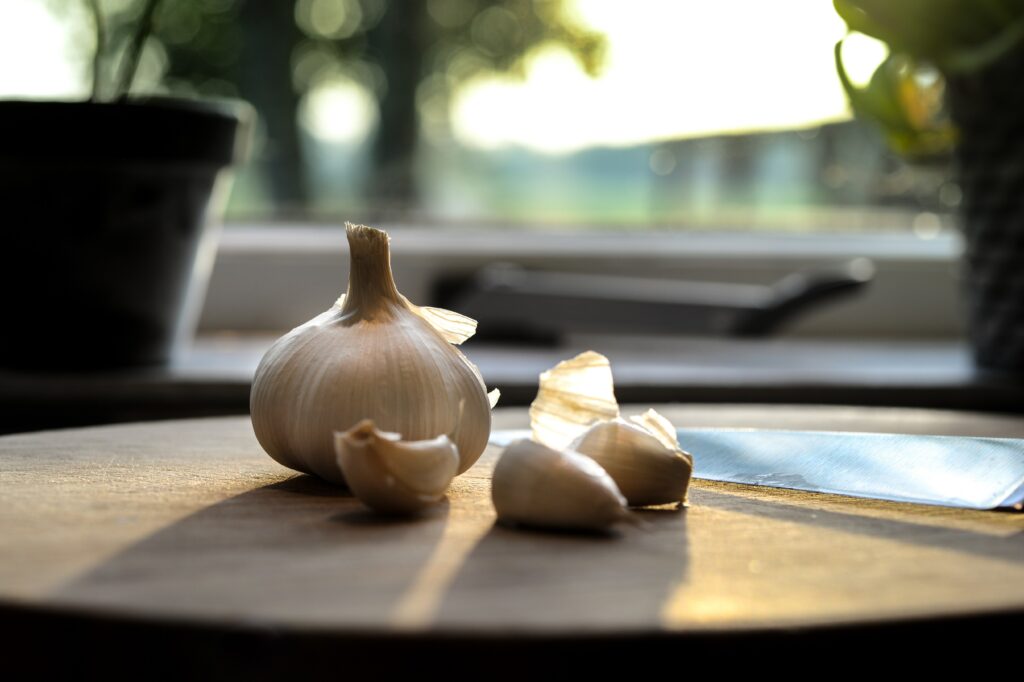Athlete’s Foot
Athlete’s foot is a common fungal infection that affects the feet.
Although unpleasant, athlete’s foot is not a serious condition and can be easily treated using over-the-counter remedies.If you think you have athlete’s foot or you are looking for an effective athlete’s foot treatment, then the below guide will tell you everything you need to know.
Read on to find out:
- What is athlete’s foot?
- What are the main symptoms of athlete’s foot?
- What are the most common athlete’s foot causes?
- How to diagnose athlete’s foot
- What are the best athlete’s foot treatments?
- Are there any home remedies for athlete’s foot?
- When to see your doctor about athlete’s foot
- Possible complications of athlete’s foot
- How to prevent athlete’s foot
- Athlete’s foot FAQs
What is athlete’s foot?
As mentioned briefly above, athlete’s foot is a type of fungal infection that affects the feet.
It is a common skin complaint that is often spread through contact with someone else who has the infection.
While an athlete’s foot fungal infection is not a serious condition, it can cause the skin on your feet to become cracked and bleed, resulting in pain or discomfort. There are a number of treatment options for people with athlete’s feet, many of which can be bought over the counter without a need for a prescription from your doctor or GP.
What are the main symptoms of athlete’s foot?
The most common symptom of athlete’s foot is itchy white patches between the toes. Other athlete’s foot symptoms include:
- Sore and flaky patches on the feet
- Cracked or bleeding skin on the feet
- Fluid-filled blisters on the soles of the feet
- Itchiness
- Burning or stinging
- Inflamed skin that may appear red, purple, or grey depending on your natural skin colour
If left untreated, an athlete’s foot infection can spread to your toenails and cause a fungal nail infection. In rare cases, athlete’s foot can spread to the hands; this is known as tinea manuum.
What does athlete’s foot look like?
As the name implies, athlete’s foot appears on the feet. In most cases, you will notice athlete’s foot between toes.
However, in some cases, you may experience:
- Athlete’s foot toenail
- Athlete’s foot on ankle
- Athlete’s foot on sole of foot
- Athlete’s foot on top of foot
- Foot fungus on heel
If left untreated for too long, athlete’s foot fungus can spread to other areas of the body and lead to athlete’s foot on fingers and hands.

What are the most common athlete’s foot causes?
When it comes to athlete’s foot causes, there are a few possible culprits:
Damp and humid environments
As athlete’s foot is caused by the same fungus as ringworm and jock itch, warm and humid environments are the perfect breeding ground for this infection. This means that wearing damp socks or shoes can significantly increase your risk of developing this common condition.
Contact with an infected person
Athlete’s foot can be easily passed from one person to another, so it is contagious. As well as skin-to-skin contact with an infected person, you can also catch athlete’s foot by coming into contact with a contaminated surface such as a towel, floor, or shoes.
Risk factors
The following factors can make you more susceptible to athlete’s foot:
- Wearing enclosed footwear
- Excessive sweating
- Sharing surfaces with someone who has a fungal infection
- Walking barefoot in public places such as swimming pools, gyms, and spas
It is worth noting that some people are more prone to athlete’s foot, while others can resist this common infection.

How to diagnose athlete’s foot
You may be able to diagnose athlete’s foot yourself without making an appointment with your doctor by identifying the most common symptoms.
If you don’t know if you have athlete’s foot, you should seek a professional medical diagnosis.
Before your appointment, you may want to prepare by writing down a list of questions to ask your doctor. This could include:
- What is causing my symptoms?
- Do I need any testing for a diagnosis?
- What treatments are available to me?
- How long will the infection last?
- Can the infection go away on its own?
- How can I stop the infection from spreading?
- How can I help the healing process?
During an appointment with your doctor about athlete’s foot, you can expect:
- Questions about your medical history
- Discussion about your symptoms
- Possibly a small scraping of the skin from your feet to be sent off for testing
What are the best athlete’s foot treatments?
Most cases of athlete’s foot can be treated with an over-the-counter remedy. These can be bought at most pharmacies or online, and they do not require a prescription from your doctor.
Some of the most effective OTC treatments for athlete’s foot are:
Antifungal medications
As athlete’s foot is caused by a fungus, antifungal medications are highly effective in treating this infection. Some of the most common antifungal medications include:
- Clotrimazole
- Econazole
- Ketoconazole
- Miconazole
- Terbinafine
- Sulconazole
Typically, the above medications are applied topically to the affected area.
Hydrocortisone
If you are experiencing swelling or skin that is very sore, your GP may recommend hydrocortisone. This medication is designed to reduce inflammation and can help to treat the symptoms of athlete’s foot.
Low doses of hydrocortisone creams can be bought over-the-counter. However, stronger creams require a prescription from a doctor.
CCS Foot Care Cream
As well as treating the infection, it can also be a good idea to treat the symptoms of athlete’s foot. CCS Foot Care Cream is a specially formulated treatment for very dry and chapped skin.
If your skin is cracked, bleeding, or very dry as a result of an athlete’s foot infection, then CCS Foot Care Cream can restore the skin on your feet. This OTC footcare product is fragrance-free and contains no harsh chemicals that could cause further irritation to your feet.
CCS Foot Care Cream can be bought online and at most pharmacies – you do not need a prescription.
Prescribed treatments for athlete’s foot
If OTC treatments have proved to be ineffective at treating your athlete’s foot, your doctor may prescribe one of the below medications:
- Griseofulvin
- Itraconazole
- Terbinafine
If you are suffering from athlete’s foot pain, then you can take over the counter pain killers or ask your GP for another form of pain relief.
Are there any home remedies for athlete’s foot?
As well as over-the-counter medications, there are several lifestyle and home remedies that you can try for a mild case of athlete’s foot. It is worth noting that home remedies for athlete’s foot have not been medically approved, and results can vary.
Tea tree oil
With its antibacterial and antifungal properties, tea tree oil is a good natural remedy for athlete’s foot.
To use tea tree oil to treat athlete’s foot, mix warm coconut oil and tea tree oil to a concentration of 25% tea tree oil and then apply directly to the affected area. Repeat twice a day.
Garlic
Studies suggest that garlic is an effective treatment for athlete’s foot when applied topically.
Crush 4-5 cloves and then rub over the affected area. Repeat twice a day.
Sea salt baths
Sea salt also has antifungal and antibacterial properties, making it an effective natural remedy for athlete’s foot.
For a salt bath, dissolve a cup of sea salt into a warm bowl of water and then soak your feet for at least 20 minutes. Gently pat dry with a clean towel.
Vicks VapoRub
Vicks VapoRub contains eucalyptus oil and menthol, both of which have antifungal properties.To use Vicks VapoRub to treat athlete’s foot, rub onto the affected area each night before bed for one month or until the infection has cleared up.

When to see a doctor about athlete’s foot?
In most cases of athlete’s foot, you do not need to see your doctor as over-the-counter treatments are usually effective.
However, there are certain circumstances when a visit to a doctor is needed:
- OTC treatments have not worked
- You are in a lot of pain or discomfort
- You think you may have a serious infection
- The infection has spread to other parts of the body
- You have diabetes
- You have a weakened immune system
If you are worried about bad athlete’s foot, it is always a good idea to make an appointment with your doctor to rule out any other conditions and to avoid complications.
Possible complications of athlete’s foot
Although in most cases, athlete’s foot is not a serious condition, if left untreated, it can cause complications such as:
- Fungal nail infection
- Secondary bacterial infection
- Infected lymph system
- Cellulitis
- Allergic reaction
To avoid these complications, seek out treatment for athlete’s foot as soon as possible and, if your symptoms do not improve, make an appointment with your GP.
How to prevent athlete’s foot
To prevent athlete’s foot, follow the below hygiene practices:
- Dry your feet thoroughly after washing, paying close attention to the skin between your toes.
- Use a separate towel for your feet and ensure that you wash this regularly
- Take your shoes off when you are at home to allow your feet to breathe
- Wear clean, cotton socks each day
- Do not share towels with other people
- Avoid shoes that make your feet sweaty
- Do not walk around barefoot in places such as public swimming pools and spas
- If you have athlete’s foot, do not scratch the affected skin as this can spread the infection to other parts of your body.
What are some of the other possible causes of a foot rash?
A rash on your foot is not always caused by athlete’s foot. Other possible causes are:
- Contact dermatitis
- Allergic reaction
- Dyshidrotic eczema
- Psoriasis
- Yeast infection
- Bacterial infection
If you are unsure about the cause of your foot rash, make an appointment with your doctor or podiatrist.
Frequently asked questions
How do you get rid of athlete’s foot fast?
The quickest way to get rid of athlete’s foot is with a combination of antifungal medication and lifestyle changes. Antifungal medicines can be applied topically to the affected area and should start to work in a few days.
You should also keep your feet clean and dry, wear fresh cotton socks each day and avoid any perfumed soaps or detergents that could cause further irritation.
What will happen if athlete’s foot is left untreated?
If left untreated, athlete’s foot can spread and cause a fungal toenail infection. It can also spread to your hands and lead to secondary infections such as an infected lymph system.
What does athlete’s foot look like?
Athlete’s foot is fairly easy to identify and typically manifests itself as scaly or flaky patches of skin between the toes. Your skin may also appear irritated and may be red, purple, or grey in colour, depending on your natural skin tone.
Should I wear socks to bed with athlete’s foot?
You can wear socks when you have athlete’s foot, although these should be kept dry and should be changed daily. When at home, it can be beneficial to take off your shoes and socks so that your feet can breathe and to minimize any sweating.
Is athlete’s foot contagious?
Yes, athlete’s foot is contagious as most cases of this skin condition are caused by a fungus that can easily be passed from one person to another. Athlete’s foot can be spread through skin-to-skin contact as well as contact with infected surfaces such as towels and floors.
What is the best treatment for athlete’s foot?
If your athlete’s foot is caused by a fungus, which in most cases it is, then an antifungal medication is the best course of treatment. These are typically applied topically and can be bought over-the-counter without the need for a prescription.
Does athlete’s foot smell?
Athlete’s foot is a type of fungal infection that can result in smelly toe fungus. As fungi thrive in moist conditions, damp footwear and sweating can worsen this unpleasant odour.
No products found